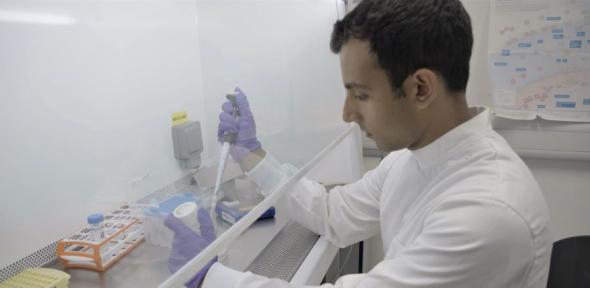
Submitted by Yolibeth López ... on Tue, 12/04/2022 - 09:57
Diljeet spoke to presenter Mishal Husain about how he has been able to partially rejuvenate cells so that they behave more youthfully, and appear 30 years younger by biological measures. Diljeet’s method of transient reprogramming, although in early stages, could eventually have implications for regenerative medicine.
Diljeet published his research describing a new method for reprogramming for a limited amount of time, effectively turning back the biological clock by 30 years. He was interviewed on BBC Radio 4’s Today program on Friday 8th of April, to explain their technique, and what his findings mean for regenerative research. Diljeet explained how they’ve managed to achieve the precise balance between reprogramming cells, making them biologically younger, while still being able to regain their specialised cell function.
Diljeet’s study looked at multiple measures of cellular age. The first is the epigenetic clock, where chemical tags present throughout the genome indicate age. The second is the transcriptome, all the gene readouts produced by the cell. By these two measures, the reprogrammed cells matched the profile of cells that were 30 years younger compared to reference data sets.
The potential applications of this technique are dependent on the cells not only appearing younger, but functioning like young cells too. Fibroblasts produce collagen, a molecule found in bones, skin tendons and ligaments, helping provide structure to tissues and heal wounds. The rejuvenated fibroblasts produced more collagen proteins compared to control cells that did not undergo the reprogramming process. Fibroblasts also move into areas that need repairing. Researchers tested the partially rejuvenated cells by creating an artificial cut in a layer of cells in a dish. They found that their treated fibroblasts moved into the gap faster than older cells. This is a promising sign that one day this research could eventually be used to create cells that are better at healing wounds.
In the future, this research may also open up other therapeutic possibilities; the researchers observed that their method also had an effect on other genes linked to age-related diseases and symptoms. The APBA2 gene, associated with Alzheimer’s disease, and the MAF gene with a role in the development of cataracts, both showed changes towards youthful levels of transcription.
The mechanism behind the successful transient reprogramming is not yet fully understood, and is the next piece of the puzzle to explore, as Diljeet explained. The researchers speculate that key areas of the genome involved in shaping cell identity might escape the reprogramming process.
(adapted from the Babraham Institute’s press release: https://www.babraham.ac.uk/news/2022/04/new-technique-rewinds-age-skin-cells-30-years)

